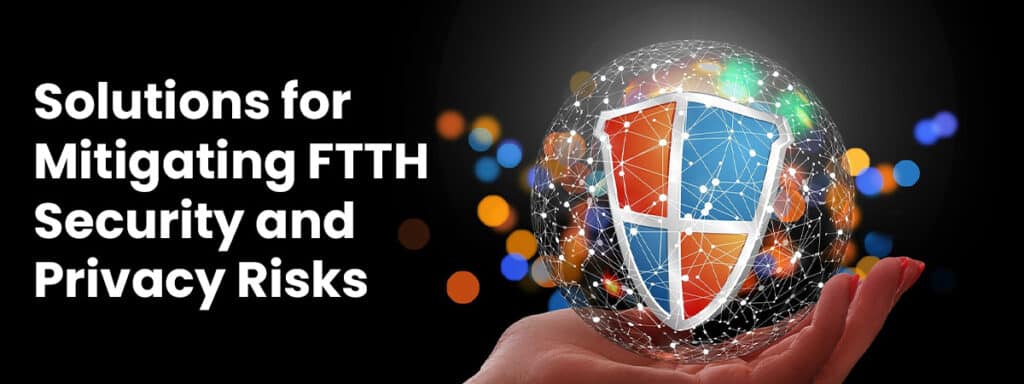Introduction
Fiber to the Home (FTTH) technology has revolutionized the way we access the internet. It has enabled us to access high-speed broadband services over a dedicated fiber line, providing faster and more reliable access to the internet. It has also opened up many new possibilities for businesses and consumers alike, as it allows for faster data transfer and more secure connections. However, as with any new technology, there are also risks associated with it. One such risk is the potential for data breaches and other security and privacy issues. This article will discuss the security and privacy risks associated with FTTH networks, as well as potential solutions for mitigating these risks.
What is FTTH?
Fiber to the Home (FTTH) is a type of broadband technology that uses a dedicated fiber-optic line to deliver high-speed internet access to homes and businesses. Unlike traditional cable or DSL connections, FTTH does not rely on copper wires for data transmission, so it is able to provide faster and more reliable connections than its predecessors. FTTH is becoming increasingly popular due to its high speeds and low latency, which makes it ideal for streaming services and other high-bandwidth activities.
Security and Privacy Risks of FTTH
FTTH technology is not without its risks, however. One of the most significant security and privacy risks associated with FTTH is the potential for data breaches. As FTTH is a dedicated line, hackers can easily target individuals or businesses that are using the technology and gain access to sensitive information. Additionally, if the FTTH network is not properly secured, attackers may be able to intercept data being transmitted over the line.
Another risk associated with FTTH is the potential for malicious actors to gain access to the network itself. If an attacker is able to gain access to the network, they can potentially intercept or alter data as it is being transmitted over the line, or even manipulate the network itself.
Finally, there is the risk of eavesdropping. As FTTH networks are typically more reliable than traditional broadband connections, attackers may be able to more easily listen in on conversations or other types of data being transmitted over the line.
Solutions for Mitigating FTTH Security and Privacy Risks
Fortunately, there are a number of solutions for mitigating the security and privacy risks associated with FTTH networks. One of the most important steps is to ensure that the network is properly secured. This can be done by using a secure router with a firewall and encryption enabled, as well as ensuring that the router’s firmware is up to date. Additionally, it is important to ensure that all devices connected to the network have up-to-date antivirus software installed.
It is also important to ensure that all devices connected to the FTTH network are using secure passwords. Weak passwords can easily be cracked by attackers, so it is important to use strong passwords that are unique for each device. Additionally, it is important to limit access to the network to only those who need it. By putting in place access controls, such as user authentication and authorization, attackers will be less likely to gain access to the network.
Finally, it is important to employ network monitoring and logging. By monitoring network activity, businesses and individuals can detect any suspicious activity on the network, allowing them to take action quickly to mitigate any potential threats. Additionally, logging will allow for the tracking of any suspicious activity, as well as providing a record of any data breaches or other security incidents.
Conclusion
Fiber to the Home (FTTH) technology has revolutionized the way we access the internet, but it also carries with it some inherent security and privacy risks. Fortunately, there are a number of solutions available for mitigating these risks, such as using a secure router, employing strong passwords, and monitoring network activity. By taking the necessary steps to secure the FTTH network, businesses and individuals can ensure that their data and privacy remain secure.

